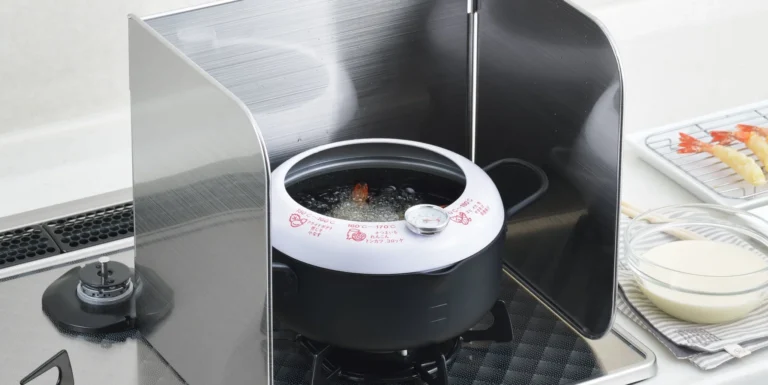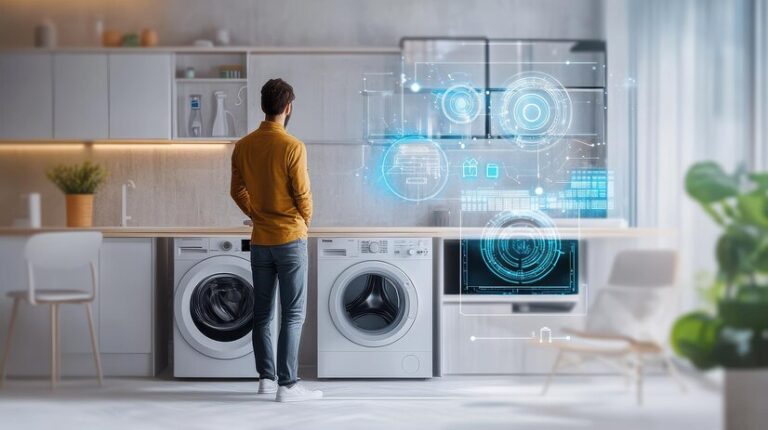The Science Behind Deep Cleaning: How It Truly Transforms Your Home
Deep cleaning isn’t just about making your home look good; it’s about creating a healthier, more livable environment. While surface cleaning can keep things tidy day-to-day, deep cleaning addresses the often-overlooked areas where dirt, germs, and allergens accumulate over time. But what makes deep cleaning so effective? Let’s dive into the science behind deep cleaning and explore how it transforms your home from the inside out.
For those in need of a thorough home cleanse, a King County deep cleaning service ensures that every nook and cranny is addressed, providing a truly transformative result.
Beyond the Surface: The Microbiome of Your Home
Every home has a unique microbiome—a collection of microorganisms, including bacteria, viruses, and fungi, that live within it. While not all of these microorganisms are harmful, some can affect your health and well-being. Deep cleaning helps manage this microbiome by targeting areas where these microbes thrive.
- Eliminating Bacteria Hotspots:
- Kitchens and Bathrooms: These rooms are prime breeding grounds for bacteria due to the presence of moisture, food particles, and organic matter. Bacteria like E. coli and Salmonella can linger on kitchen surfaces, while Staphylococcus aureus might be found in bathrooms. Deep cleaning involves sanitizing countertops, sinks, and other surfaces with disinfectants that break down bacterial cell walls, effectively killing harmful microbes and reducing the risk of illness.
- High-Touch Surfaces: Items like doorknobs, light switches, and remote controls are touched frequently, transferring bacteria and viruses from hands to surfaces. Deep cleaning includes disinfecting these areas, breaking the chain of transmission, and reducing the spread of germs throughout the home.
- Controlling Mold and Mildew:
- Moisture Management: Mold and mildew thrive in damp, poorly ventilated areas, such as bathrooms, basements, and around windows. These fungi release spores that can cause respiratory problems, especially in people with asthma or allergies. Deep cleaning targets these damp areas, using mold-specific cleaning agents to break down the cell structure of fungi and prevent their growth. This not only improves air quality but also protects the structural integrity of your home by preventing mold-related damage.
- Air Purification: Mold spores can become airborne, contributing to indoor air pollution. Deep cleaning often involves cleaning or replacing air filters and using HEPA-filter vacuums that capture mold spores and other particulates, preventing them from recirculating in the air.
The Chemistry of Stain Removal
Stains are a common issue in any household, whether they’re on carpets, upholstery, or walls. Understanding the chemistry of stains and how different cleaning agents work can help you tackle even the toughest spots.
- Breaking Down Organic Stains:
- Enzymatic Cleaners: Organic stains, such as food, blood, or pet urine, are composed of proteins, fats, and carbohydrates. Enzymatic cleaners contain specific enzymes that target these components, breaking them down into smaller molecules that can be easily washed away. For example, protease enzymes break down protein-based stains, while lipase enzymes tackle fatty stains. Deep cleaning often involves the use of these specialized cleaners to remove stubborn organic stains effectively.
- Oxidizing Agents: Stains like red wine or coffee contain pigments that can be difficult to remove. Oxidizing agents, such as hydrogen peroxide, work by breaking the chemical bonds of these pigments, effectively “bleaching” the stain without damaging the underlying material. This process not only removes the visible stain but also neutralizes any odor-causing compounds.
- Dissolving Grease and Grime:
- Surfactants: Grease and grime are composed of oily substances that don’t mix well with water, making them challenging to clean. Surfactants in cleaning products help by reducing the surface tension of water, allowing it to mix with oil. This emulsifies the grease, breaking it into smaller droplets that can be rinsed away. Deep cleaning utilizes stronger surfactant-based cleaners to dissolve built-up grease, especially in kitchens and on hard surfaces.
- Alkaline Cleaners: Grease is typically acidic, so alkaline cleaners are particularly effective at breaking it down. These cleaners contain compounds like sodium hydroxide or potassium hydroxide, which react with the grease to form soap and glycerol, both of which can be easily rinsed away. This chemical reaction, known as saponification, is a key part of the deep cleaning process for greasy areas.
The Physics of Dust Removal
Dust is more than just an aesthetic problem; it can impact air quality and trigger allergies. Deep cleaning involves understanding the physical properties of dust to remove it more effectively.
- Electrostatic Attraction:
- Dust and Static: Dust particles are often attracted to surfaces through static electricity, especially in low-humidity environments. This makes them cling to surfaces like electronics, blinds, and screens. Deep cleaning addresses this by using microfiber cloths, which are positively charged and attract dust particles more effectively than traditional dusters. The cloths capture and hold the dust rather than spreading it around, making the cleaning process more efficient.
- Vacuuming with HEPA Filters: Standard vacuuming can stir up dust, making it airborne and more likely to resettle elsewhere. Deep cleaning with a HEPA-filter vacuum traps even the smallest dust particles, including those that are less than 0.3 microns in size. This prevents them from being released back into the air, significantly reducing the amount of dust in your home.
- Gravity and Settling:
- Top-to-Bottom Cleaning: Dust naturally settles downward, so deep cleaning starts at the highest points in a room, like ceilings, fans, and shelves, before moving to lower surfaces and finally the floor. This method ensures that dust is continuously moved downward, where it can be vacuumed or swept away, rather than being redistributed onto cleaned surfaces.
- Airflow Management: During deep cleaning, managing airflow is crucial to prevent dust from resettling. Using fans or air purifiers to direct dust away from clean areas helps keep your work from being undone. In some cases, deep cleaning might include changing or cleaning HVAC filters to improve airflow and reduce dust circulation.
The Psychological Impact of a Deep Clean
A clean home doesn’t just look and smell better; it also has significant psychological benefits. The act of deep cleaning and the results can contribute to improved mental well-being.
- Reducing Stress and Anxiety:
- Order and Control: Clutter and mess can contribute to feelings of stress and anxiety by creating a sense of disorder. Deep cleaning helps restore order, giving you control over your environment. The process of cleaning itself can be therapeutic, providing a sense of accomplishment and satisfaction as you transform your space.
- Creating a Calming Environment: A clean, organized home is more conducive to relaxation. It’s easier to unwind and enjoy your space when it’s free from distractions like dust, dirt, and clutter. This is especially important in areas designed for relaxation, such as bedrooms and living rooms.
- Boosting Productivity:
- Clear Space, Clear Mind: The concept of “clear space, clear mind” suggests that a tidy environment can enhance focus and productivity. By removing clutter and thoroughly cleaning your workspace, you create an environment that encourages concentration and efficiency. This is particularly beneficial for those who work from home or spend a lot of time in their living spaces.
- Motivation to Maintain Cleanliness: Once you’ve completed a deep clean, you’re more likely to maintain that level of cleanliness. The psychological boost from seeing your home in its best possible state can motivate you to keep up with regular cleaning tasks, making it easier to maintain a clean and organized space over time.
Conclusion: The True Power of Deep Cleaning
Deep cleaning is more than just a chore; it’s a powerful tool for transforming your home into a healthier, more livable space. By understanding the science behind deep cleaning—from eliminating harmful bacteria to removing stubborn stains and dust—you can appreciate the full impact it has on your environment.
Whether you choose to deep clean your home yourself or hire professionals, the benefits are clear. A thoroughly cleaned home is not only more enjoyable to live in but also contributes to better health, increased productivity, and a greater sense of well-being.
So, the next time you’re faced with the task of deep cleaning, remember: you’re not just cleaning your home; you’re transforming it in ways that go far beyond the surface.







